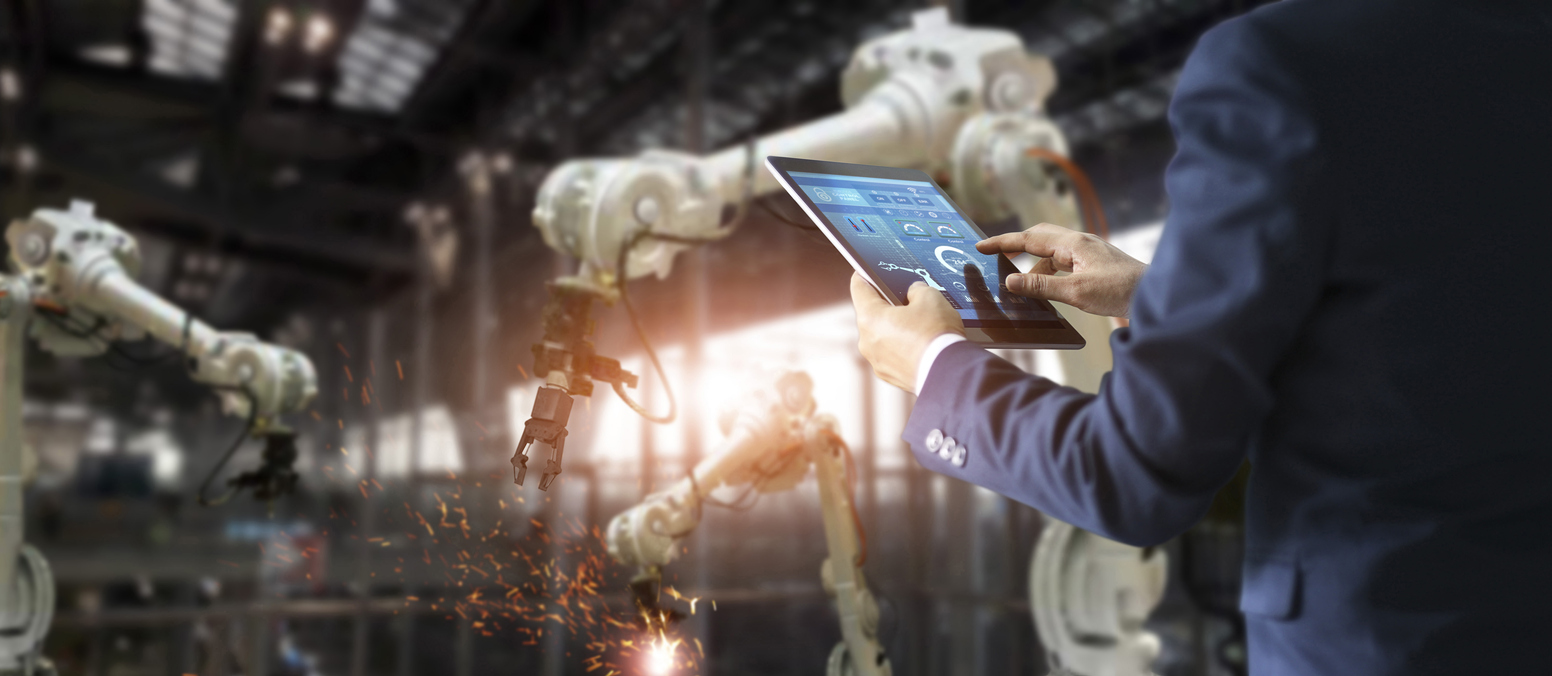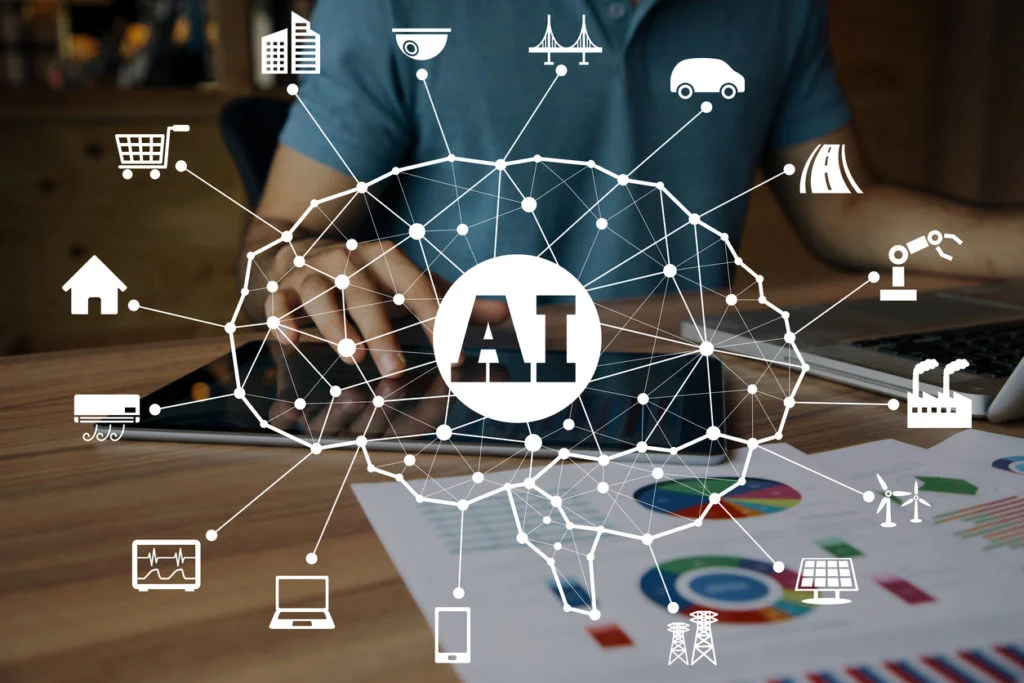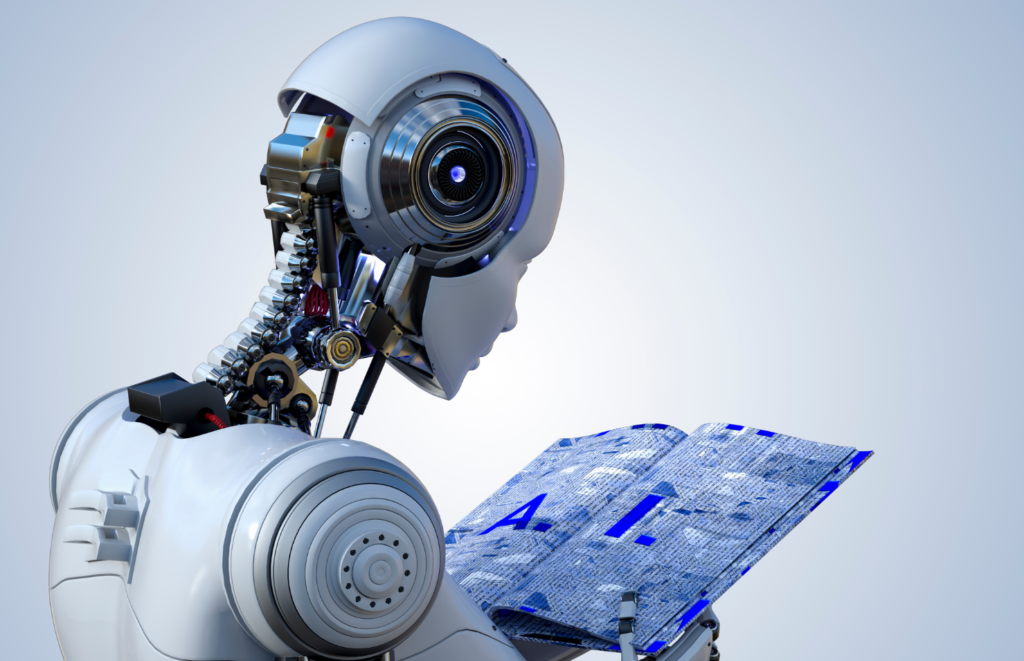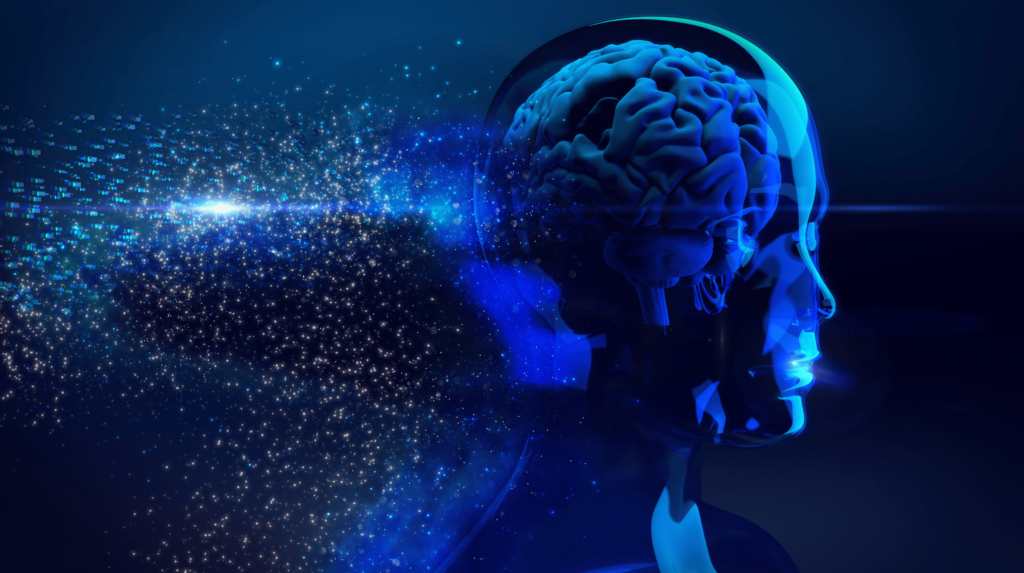An early adopter of disruptive technologies, the manufacturing industry is leading the way in modernizing business practices. From the very start of the 21st century, the sector has been quick to adopt and implement advanced technologies such as robotics, the Internet of Things (IoT), and of course artificial intelligence (AI).
While it has been some time since the manufacturing industry adopted artificial intelligence (AI) and machine learning (ML), the sector has only recently started to reap the benefits of these advanced technologies. In fact, we can go as far as to say that today artificial intelligence and machine learning are transforming the manufacturing industry. This is not an empty statement, rather it is one backed by research.
According to a recent report by the World Economic Forum, the combination of disruptive technologies such as the internet of things (AI), additive manufacturing, advanced robots, artificial intelligence, and machine learning will push us towards the fourth industrial revolution. Most of the manufacturing companies— 80% of them—see AI initiatives having a positive impact on their bottom line—with over 22% predicting an increase in revenue and over 17% expecting reduced costs.
How are AI and ML technologies helping manufacturing companies today? By improving the supply chain, reducing spot production defects and equipment downtime, and shortening design times. Of course, this list is not exhaustive and there are many more ways in which artificial intelligence and machine learning technologies are transforming the manufacturing industry. We will discuss some of them in the following sections.
How AI is Helping Manufacturers to Improve Their Operations and Bottom Line
If you are a modern manufacturing organization, then you may want to consider implementing AI in your operations. Why is that? Because artificial intelligence has unique applications that can completely transform your manufacturing business—for the better. What are these unique applications of AI that we are talking about? They are listed below:
1. Machine to Machine (M2M) Communication
‘Machine to Machine communication’ (M2M) is popular jargon amongst the manufacturing fraternity today. The phrase is making a lot of rounds in the industry these days, and the reason for this is that the benefits associated with M2M are too important to ignore.
What is M2M? It is a term used to describe a wired or wireless network that allows similar devices to communicate freely. Although it is a broad term, M2M typically refers to the use of distributed systems to control manufacturing or industrial equipment. Data that is fed through networks is typically captured by M2M technology using sensors. The data is captured to provide the variety of machines performing different tasks with critical input. This is an application of the Industrial Internet of Things (IIoT).
By allowing machines to communicate not only with each other but also with the rest of the facility as well as with managers and at times the entire supply chain, artificial intelligence plays a critical role in M2M communication and in the Industrial Internet of Things (IIoT).
AI allows manufacturing equipment to alert staff when it encounters a problem or if it is about to break down. This helps a manufacturer to avoid unplanned downtime, keep their business agile, and react before an issue slows down their operation.
2. Eliminating Overspending
By eliminating overspending, artificial intelligence (AI) can help manufacturers to reduce their costs. For long, manufacturers have found it difficult to buy the exact inventory needed—not too much or too little. Demand is always fluctuating, and manufacturers need to have to enough stock to meet the needs of the customers.
As a result, manufacturing businesses either overestimate or underestimate the stock needed to meet customers’ needs. This often ends up costing them. The good news is that artificial intelligence (AI) can help manufacturing businesses overcome this problem by analyzing the market and accurately assessing the demand for their products in the future.
Predictive analytics—in which AI plays a key role—is critical here. Manufacturers that have not implemented AI continue to rely on intuition and their gut instinct rather than on accurate and reliable data to make decisions regarding the stock needed—now and in the future—to meet demand.
3. A Seamless Supply Chain
Not only does artificial intelligence (AI) impact the inner workings of a manufacturing facility, it can also be used to connect entire supply chains from sourcing/production of the raw materials to the delivery of the freight or finished product. AI can connect a supply chain to create a seamless experience not just for the businesses involved in the complex logistics processes, but also for the end users of the manufactured good. For the manufactures, a seamless supply chain enabled by AI can have a profound impact on their bottom line.
As seen above, artificial intelligence (AI) is playing a key role in modernizing and improving the business practices of the manufacturing industry. In fact, every digital technology making its way to the shop floor today is in some way influenced by AI.
So, as a manufacturing business, you should realize the incredible potential that AI has for your business and take measures to capture this potential as much as you can. You can do this by adopting and implementing the artificial intelligence (AI) and machine learning (ML) technologies that are revolutionizing the manufacturing industry. These technologies are discussed next.
The Artificial Intelligence (AI) and Machine Learning (ML) Technologies Revolutionizing the Manufacturing Sector
You are probably aware of the fact that there are over 7 billion people on our planet today, but did you know that the global middle class is growing faster than ever before? Already the largest segment of demand in the global economy, the global middle class is seeing more and more people join it each day and this trend is expected to continue into the future.
The global middle class is expected to reach 4 billion people by the end of 2020 and 5.3 billion people by the end of 2030. We will need millions of new buildings to accommodate this population in the future. We will also need more highways, hospitals, airports, and educational institutions. Not to forget, the demand for many consumer products afforded by the middle class will also increase substantially.
However, there is a big challenge to overcome to meet the needs of this rapidly growing global middle-class population, and that is the limitations of the current methods of manufacturing. The current methods are not capable of meeting the growing demand of the middle class as they are limited by social, economic, and environmental constraints.
To meet the needs of the growing global middle class, the manufacturing sector must be able to do more with less, which means that it needs better designs, better planning, and better methods of execution. Artificial intelligence (AI) and machine learning (ML) technologies are helping to ensure that, and in doing so, they are revolutionizing the manufacturing sector. Following are some of the ways AI and ML are equipping the manufacturing industry to meet the growing demand of consumers, particularly of the growing global middle class.
1. A.I Based Product Demand Forecasting
Artificial intelligence (AI) and machine learning (ML) can help manufacturers reduce energy costs and lower negative price variances by improving demand forecasting. Honeywell—an American multinational company that manufactures a variety of commercial and consumer products, engineering services and aerospace systems for a wide variety of customers, is already integrating AI and ML algorithms into procurement, strategic sourcing and cost management to improve its product demand forecasting.
Staying on the topic of forecasting, Mckinsey—the global management consulting firm, predicts that machine learning (ML) will lower supply chain forecasting errors by 50% and reduce lost sales by 65% with better product availability.
2. Smart Manufacturing
By leveraging the power of predictive analytics and machine learning algorithms, smart manufacturing systems are helping to enhance the production capacity. Data gathered from the devices or sensors embedded in industrial equipment used by a manufacturer is where predictive analytics derives its power from. The sensors are incorporated into the Internet of Things (IoT), which gathers and shares data with data scientists on the cloud.
With the above arrangement, manufacturing businesses can move from a repair-and-replace to a predict-and-fix maintenance model. To make this shift, manufacturers are using AI and ML technologies to enable their businesses to retrieve the right information at the right time to make the right decisions.
3. Virtual Inspection
In an industrial environment, virtual inspection technology is used to detect functional as well as cosmetic defects. A new offering developed by IBM allows manufacturers to automate visual quality inspections.
A centralized ‘learning service’—with roots in deep learning—collects images of all products—normal and abnormal. This is followed by the building of analytical models to identify and categorize various characteristics of machine parts and components into OK or NG.
Ok is used for characteristics meeting quality specifications while NG is used for characteristics that don’t meet these specifications. IBM says that its AI-powered visual inspection technology can help manufacturers to improve inspection efficiency and product quality. We agree with this.
4. Predictive Maintenance
In a quest to achieve excellence throughout the production process, many manufacturers today are embedding their machinery with sensors to generate performance and workload data in real-time. With this, diagnosing faults and predicting the need for equipment maintenance becomes easier.
For example, a lack of maintenance may cause a manufacturer’s machine to break down, resulting in losses for the business. With predictive maintenance—enabled by AI and IIoT, manufacturing businesses can easily detect significant causal factors like weather, temperature, etc. and in doing so, significantly improve their ability to handle equipment malfunction.
5. Reinforcement Learning in Warehouse Management
For many warehouses—especially the large ones—it can be a real challenge to streamline space, manage inventories, and lower transit time. Therefore, to increase warehouse management efficiency, many manufacturing businesses today are employing reinforcement learning to manage their warehouses.
Using multi-robot systems, reinforcement learning based algorithms can address task scheduling and path planning issues to increase the efficiency of intelligent warehouses. A Tokyo based company Fanuc is already employing robots with reinforcement ability to perform warehouse tasks with great precision and agility.
AI Implication in Industry 4.0
The new way of manufacturing, Industry 4.0 utilizes devices connected to the cloud, internet of things (IoT), and cognitive computing. It brings forth the concept of the ‘smart factory’ where systems in the cyber space monitor the factory’s physical processes to make discrete decisions.
With the application of artificial intelligence (AI) in Industry 4.0, computers and robotics will combine to automate and maximize the efficiency of the industrial processes. The following are two applications of AI in industry 4.0 to watch out for in the future:
1. The Rise of Quality 4.0
With a rise in the complexity of products and today’s extremely short time-to-market deadlines, manufacturing businesses are finding it extremely hard to maintain high levels of quality and comply with the quality standards required. At the same time, customers expect faultless products, making it even more important for manufacturers to increase their quality levels.
High defects rates and product recalls can be detrimental for any manufacturing business. Quality 4.0—which involves the use of AI algorithms—can help manufacturers to avoid this by alerting them of emerging product faults that can potentially cause product quality issues. A high level of quality can be maintained by tending to these issues early on.
Quality 4.0 can also enable manufacturing businesses to capture data pertaining to the use and performance of their products in their field, helping product development teams to make better strategic and tactical engineering decisions.
2. The Increasing Role of Augmented Reality (AR) and Virtual Reality (VR) in Industry 4.0
The concept of the ‘Smart factory’ is closer to becoming a reality thanks to technologies like augmented reality (AR) and virtual reality (VR). Technologies that can enable cutting-edge production, AR and VR are a key part of the industry 4.0. Worth mentioning here is the Google Glass specifically designed for the factory floor which was recently relaunched.
The smart glasses—which are Wi-Fi enabled—make it possible for mechanics, factory workers, and other technicians to see manuals, instructional videos, training videos etc. in their line of sight. Not only does this ensure higher standards of work, it also increases safety and agility.
Final Word
To create an agile manufacturing environment and make smarter decisions in real-time, many manufacturing industries today are preparing themselves to harness AI along with other related disruptive technologies such as machine learning (ML) and internet of things (IoT).
By leveraging AI and applying ML, deep learning and other evolutionary algorithms to the sensor data, manufacturers today can realize the full potential of industrial internet of things (IIoT) to transform their operations and improve their bottom line. At Achievion, we can build AI software and apps powered by neural networks technology to help the manufacturing industry improve their forecasts, reduce costs, and enable a seamless supply chain.









